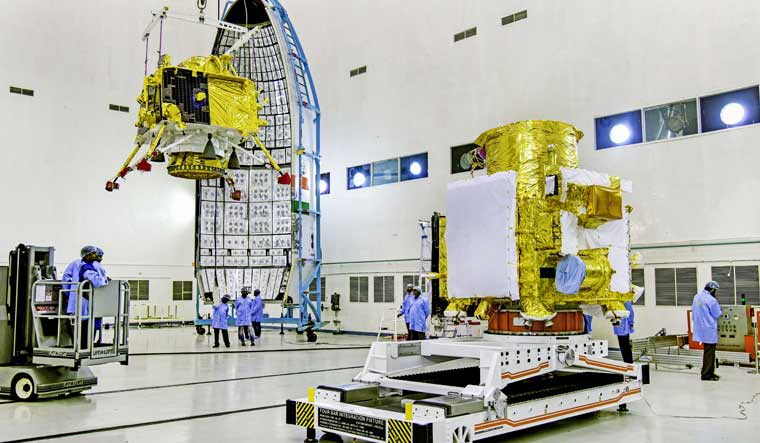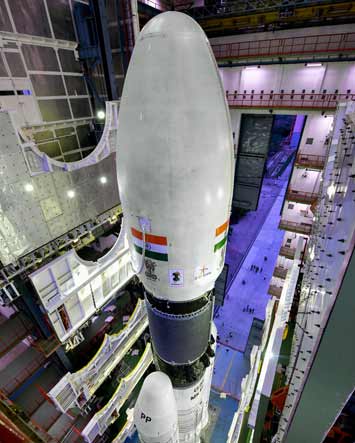Chandrayaan 2, India's most challenging space mission is getting ready to take off in the next few hours in the midst of cloudy weather and possibility of light showers at the Satish Dhawan Space Centre at Sriharikota around 100 kilometres north of Chennai. However, any form of rain is unlikely to have any affect on the launch as the launch vehicle (GSLVMk-III) is rain protected and is one of India's most powerful launcher to date that has been completely fabricated and designed within the country. One may recall that the Chandrayaan 1 mission had taken off when it was raining heavily and the nearby areas were in the grip of north-east monsoon in the early hours of October 22, 2008. Media delegates and general spectators are waiting in Chennai and nearby areas to leave for Sriharikota on Sunday night to witness the Chandrayaan 2 launch. Indian Space Research Organisation (ISRO) says that full preparations have been completed for the launch and it is expected to take off on schedule at 2.51 am on July 15.
Also read: Reaching for the moon
Interestingly, the ISRO has also allowed the general public to witness the launch from the viewing gallery at the space centre at Sriharikota. It is being reported that more than 7,000 people have registered online to witness the launch and are expected to reach Sriharikota on Sunday night. The launch is also said to have evoked great interest from the foreign media. According to reports, one of the main reasons for this is the ISRO's capability to execute projects at minimum costs. The entire project cost of Chandrayaan 2 is said to be much lesser than that of the Hollywood block buster Avengers Endgame. Many foreign media delegates were also seen collecting their media passes from the Press Information Bureau (PIB) office in Chennai to witness the launch. State run TV Channel Doordarshan will broadcast the launch event live from Sriharikota. The ISRO, too, will also live stream the event on both Twitter and Facebook.
Chandrayaan 2 is one of the most interesting missions India has undertaken because it will shed light on the unknown southern section of the moon and expand on the findings of the Chandrayaan 1. At the same time, it will develop and demonstrate key capabilities such as soft landing and roving on the lunar surface. The ISRO says that this mission will benefit the common man because it will foster a new age of discovery, grow commercial opportunities in India, promote more global alliances, increase our understanding of space, stimulate advancement of technology and inspire future generations.
Chandrayaan 2 has several scientific payloads in its orbiter, Lander and Rover, for a detailed study of lunar seismography, mineral identification and distribution, surface chemical composition, thermo-physical characteristics of top soil and the composition of the tenuous lunar atmosphere of the moon.
The spacecraft post its take off will undergo many different manoeuvres before reaching the moon on September 6 or 7. After the take-off, the first stage will involve the separation of Chandrayaan 2 integrated module from GSLV Mk-III followed by the completion of five liquid engine burns then followed by a Trans Lunar Injection. It will then enter the moon's sphere of influence and will be inserted into a lunar orbit. This will again be followed with the separation of Vikram lander from the orbiter and the commencement of the powered descent phase. Finally, there will be initiation of terminal landing phases and the completion of soft landing. Once the soft landing is complete, the rover Pragyan will carry scientific experiments on the moon.
The ISRO is aiming a soft landing at the southern region of the moon mainly because there are not many craters in that region and it has a nearly flat surface which will pave the way for a smooth soft landing. Besides this, there is also good solar light available and this will be helpful to power the system. Both the lander and the rover will have a lifespan of one lunar day (14 earth days) whereas the orbiter will circle around the moon for a year.




